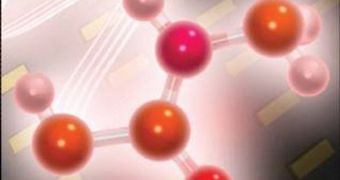In a groundbreaking, new discovery that has the potential to change the methodology of biomolecular studies around the world, scientists have managed to create a new investigation method for looking inside protein molecules and at how they bind with each other. The research could lead to the creation of a number of new drugs, all based on an entirely different type of chemical reaction than existing therapies. The early treatment of complex diseases may also become possible, in addition to new diagnostics methods.
The new method “allows identification of a protein by directly analyzing its vibrational fingerprint signatures. It may lead to a new toolkit for studying biomolecules,” Boston University Assistant Engineering Professor Hatice Altug says. The expert has also been the leader of a new team, comprising scientists from Boston and the Tuffts University. Even very small protein clusters emit a unique signature, known as a “vibrational fingerprint.” The new infrared spectroscopy technique is able to determine these fingerprints with extreme accuracy, the team reveals.
“There is currently a need to develop label-free bio-detection technologies. Infrared spectroscopy is a label-free method, because if you tune your ‘eye' to the infrared frequencies, you can directly see the bio-molecules without any labels,” Altug adds. Details of the infrared method appear in the latest issue of the respected journal Proceedings of the National Academy of Sciences (PNAS). Funds for the research were mainly provided by the US National Science Foundation (NSF).
“We use arrays of tiny gold nanoparticles as efficient plasmonic nanoantennas to greatly amplify the ability to detect a molecule's inherent frequency,” post-doctoral fellow Ahmet Ali Yanik, who has also been part of the research team, explains. “Our technique gives researchers an ability to enhance inherent vibrational signatures more than 100,000 times. This allows us to sensitively study molecular structures and biological functions of extremely small quantities of molecules,” Altug reveals.
“Our plasmonic method is quite general and can also be adapted to enhance the infrared fingerprints of other molecules than proteins. It therefore provides a general purpose toolkit and may help amplify chemical sensing capabilities that are of particular concern to national defense,” he concludes.

 14 DAY TRIAL //
14 DAY TRIAL //